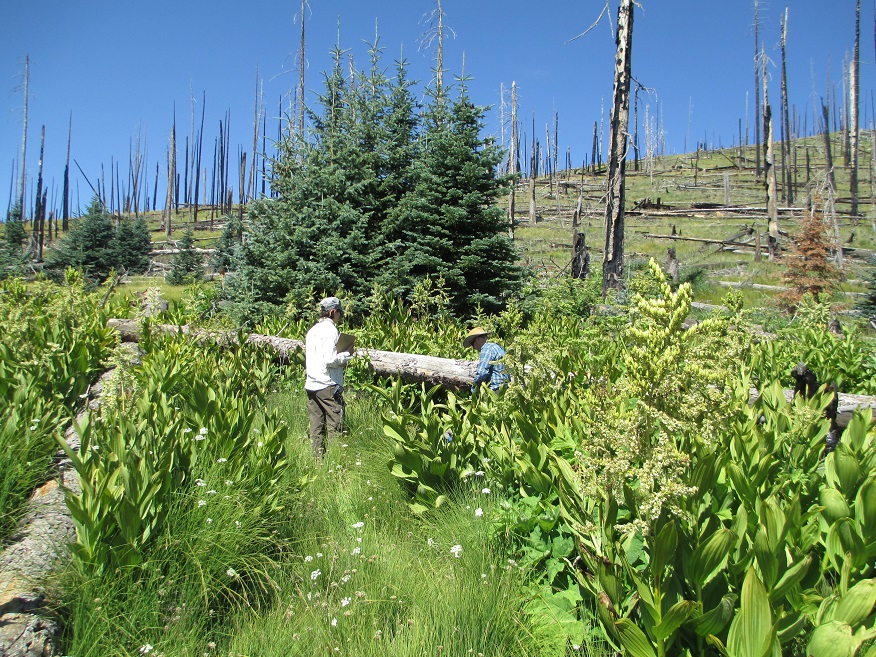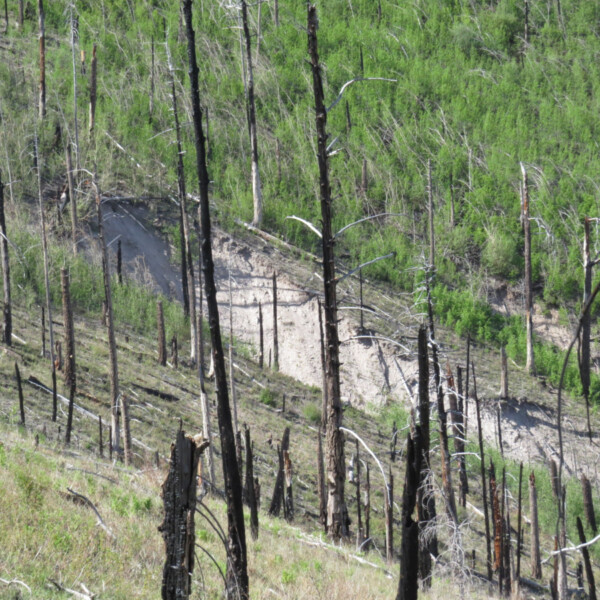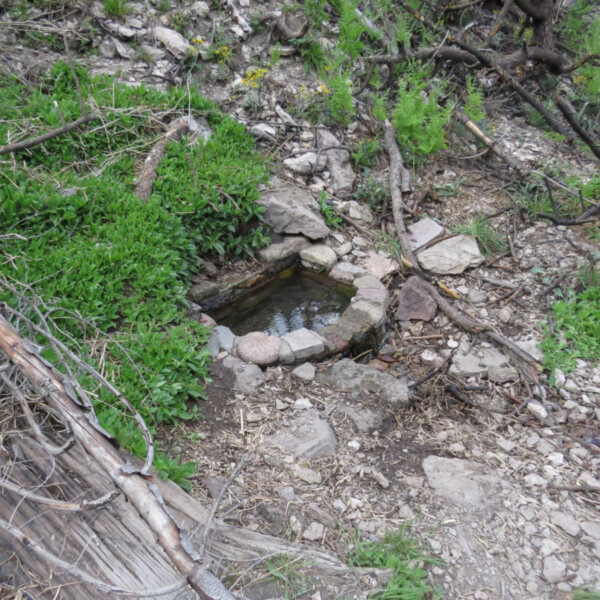On June 5, 2020, lightning ignited the Bighorn Fire which continues to burn this week across the Santa Catalina Mountains north of Tucson. Fire is a natural and necessary component of our Sky Island ecosystems. Yet there is no question that fires like these in the wildland-urban interface are of high concern for human communities. While I write this, I can see a plume of smoke rising from the mountains and my thoughts and gratitude are with the first responders putting their lives at risk to contain this fire and protect us.
When the smoke clears, there will be an urgent need to evaluate the fire’s impact on springs that serve as essential water sources in the Santa Catalina Mountains. While the fire may at first, only remove vegetation, once the monsoon rains start there is a high risk of soil erosion. This erosion can disturb the habitat around the spring, or even blanket and submerge the spring source under sediment. Simple acts like installing loose rock structures above springs can stabilize the terrain and protect them from siltation if erosion occurs. This not only protects the groundwater source where it emerges from the ground, but also protects the vital habitat springs support.
Since 2000, most of the Santa Catalina mountains have burned in a variety of wildfires. The Bighorn Fire started out in an area that hasn’t burned since at least 1984 (perhaps much longer) and has now moved into areas burned in the 2003 Aspen Fire. From spring survey work conducted by Sky Island Alliance in 2013-2018, we know that springs in low severity fire areas are relatively unharmed by wildfire. Because springs are cooler and wetter, they can also serve as refuges for plants and animals from fire since they often don’t burn as badly as their immediate surroundings.

High Peak Cienega in the Pinaleño Mountains, provided a refuge for conifers in an area of moderate to high fire severity during a past wildfire.
For springs in moderate or high burn severity areas however, some emerge from the fire in a stable condition, but a few are unlocatable. For example, Sky Island Alliance attempted to locate Box Spring in a high fire severity area 12 years after the Aspen fire and it wasn’t found. Damp soil was found, but in the jumble of fallen burned trees, new forest growth, and soil erosion on the hillslope, the water source wasn’t located. It may still be there, but it will be years until the spring habitat recovers. Similarly, after the 2011 Horseshoe 2 fire, springs in the Chiricahua Mountains were damaged by erosion. A spring in the Santa Rita Mountains that was home to riffle beetles, a spring endemic, was obliterated by severe erosion after a wildfire.




